Introduction
Efficient deployment practices are at the core of modern software development, driving organizational agility and enhancing the speed and stability of application releases. By automating and streamlining deployment processes, companies can significantly reduce time-to-market for new features, thereby improving customer satisfaction and minimizing risks of errors and downtime. Continuous deployment (CD) has emerged as a pivotal practice, ensuring that every code change is automatically tested and deployed, thereby maintaining high standards of quality and reliability.
Moreover, optimized deployment practices lead to substantial cost savings and better resource allocation. By minimizing time spent on routine tasks, organizations enable tech professionals to focus on innovation. This efficiency is crucial, especially when data indicates that a significant portion of models fail to reach production due to inefficient setups.
Furthermore, these practices enhance team morale and build stakeholder trust, reinforcing the reliability of technological investments and fostering long-term business relationships.
In the competitive landscape of today, establishing seamless deployment pipelines through automation, consistency, and continuous monitoring is essential. These principles, supported by successful industry examples, highlight the transformative impact of efficient deployment strategies on operational efficiency, product quality, and overall organizational success.
Benefits of Efficient Deployment Practices
Effective implementation practices are crucial for enhancing organizational agility and responsiveness. By automating and streamlining implementation processes, businesses can significantly reduce time-to-market for new features and updates. This swift implementation not only enhances customer satisfaction but also results in more stable applications and services by reducing the risk of errors and downtime. 'According to recent trends, continuous delivery (CD) has become an integral part of modern software development, where every change made to the codebase is automatically tested and pushed to production.'. This approach ensures that applications are always ready for use without the need for human intervention, thus maintaining high standards of quality and reliability.
Enhanced implementation methods also contribute significantly to cost effectiveness. By reducing the time spent on menial tasks such as IT setup, organizations can allocate resources more effectively, allowing data scientists and other tech professionals to focus on innovation rather than routine operations. Research shows that a substantial amount of a data scientist's time may be lost on unproductive activities, underscoring the necessity of efficient implementation processes. For example, the Boston Consulting Group discovered that merely 44% of models reach production, highlighting the inefficiencies that can occur without appropriate implementation methods.
Moreover, these optimized practices enhance group morale and strengthen stakeholder trust in technology initiatives. When implementation processes are efficient and reliable, teams can work more confidently and stakeholders can trust that technology investments are being utilized effectively. This trust is further reinforced by the stability and reliability of applications, which are essential for maintaining long-term business relationships and achieving strategic goals.
Key Principles for Streamlining Deployment Pipelines
Creating a well-defined release pipeline is essential for achieving seamless integration and delivery. Automation plays a pivotal role, enabling swift and consistent implementations. This approach is illustrated by Siemens Digital Industries, which leverages automated pipelines to bridge the gap between physical and digital realms, ensuring fast and accurate data flow.
Consistency is another key principle, as it ensures uniformity across development, testing, and production environments. 'This uniformity is crucial for maintaining the integrity of implementations, as demonstrated by ICL's approach to monitoring industrial equipment.'. Despite harsh conditions, ICL maintains consistent monitoring practices to prevent costly machinery failures.
Continuous monitoring of deployments is vital for early issue detection and prompt resolution. For instance, ICL's use of manual and visual monitoring, although effective, highlights the importance of continuous oversight to mitigate risks. By automating monitoring processes, organizations can significantly reduce the likelihood of revenue loss or environmental damage due to equipment failure.
In today's competitive environment, accelerating the pace of application development is essential. DevOps practices, which concentrate on automation, speed, and collective responsibility, enable teams to produce high-quality applications faster and more efficiently. Continuous release, a cornerstone of modern application development, automates the process of implementing changes to production, ensuring that applications are always current without human intervention. This approach not only speeds up time-to-market but also improves the overall quality and reliability of products.
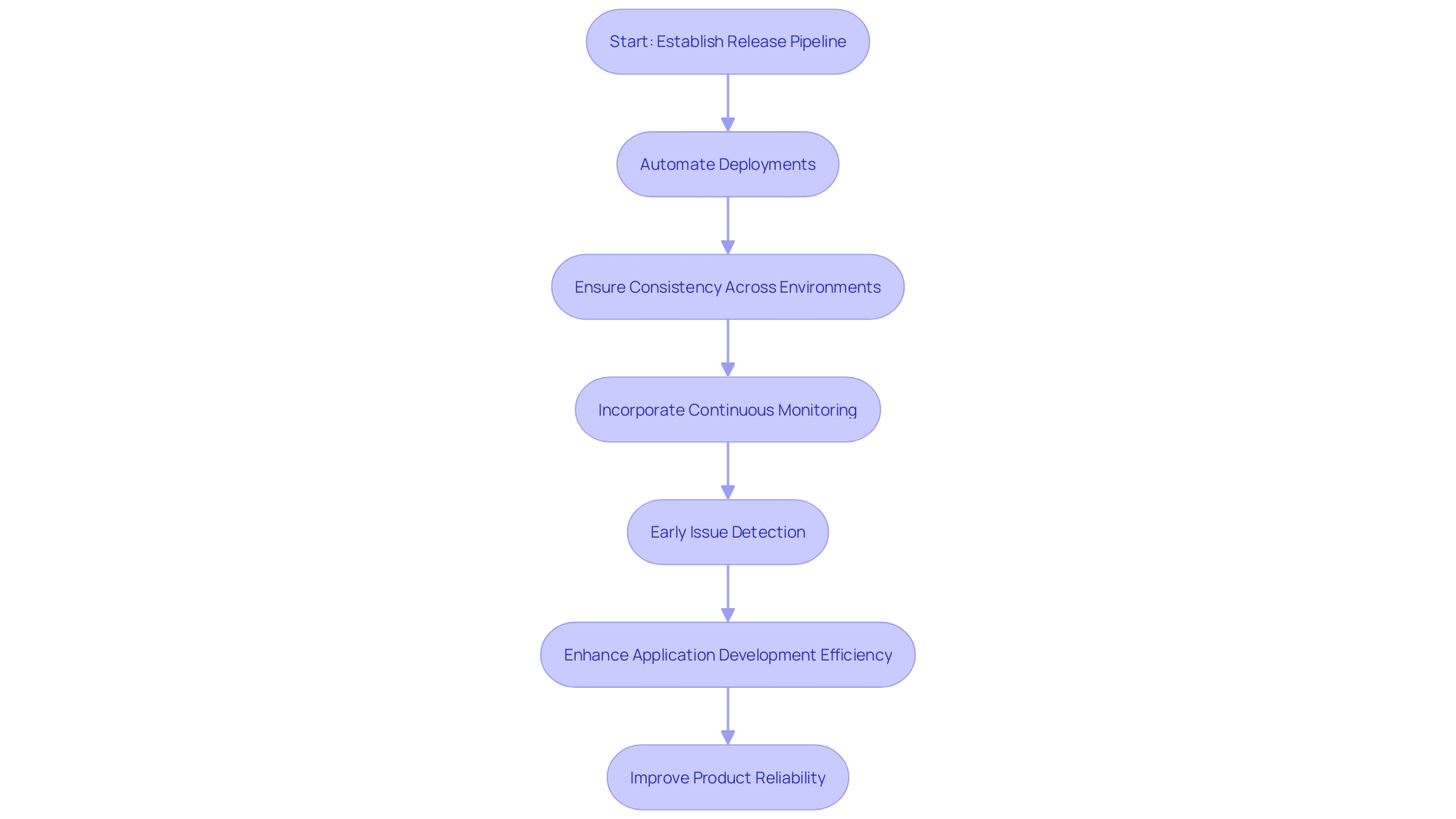
Automation and Continuous Integration
'Automation forms the cornerstone of modern implementation strategies, significantly influencing the speed and quality of software delivery.'. Continuous Integration (CI) enables teams to automate the build and test processes, ensuring that newly integrated code does not introduce defects. This continuous feedback loop allows developers to identify and resolve issues early in the development cycle, fostering a culture of quality and operational efficiency.
Furthermore, with the digital revolution accelerating, businesses are increasingly focused on reducing their release cycle times to bring products to market faster. The deployment of CI/CD technologies has proven instrumental in achieving this objective. According to research, integrating various CI/CD tools and methodologies can shorten the development lifecycle while enhancing overall quality.
Adopting CI/CD practices is not without its challenges. The proliferation of different tools, languages, and syntaxes requires developers to stay updated and adaptable. However, overcoming these challenges can lead to significant advantages, as evidenced by many successful case studies in the industry. By leveraging automation and continuous feedback, businesses can not only enhance their time to market but also ensure the robustness and reliability of their software solutions.
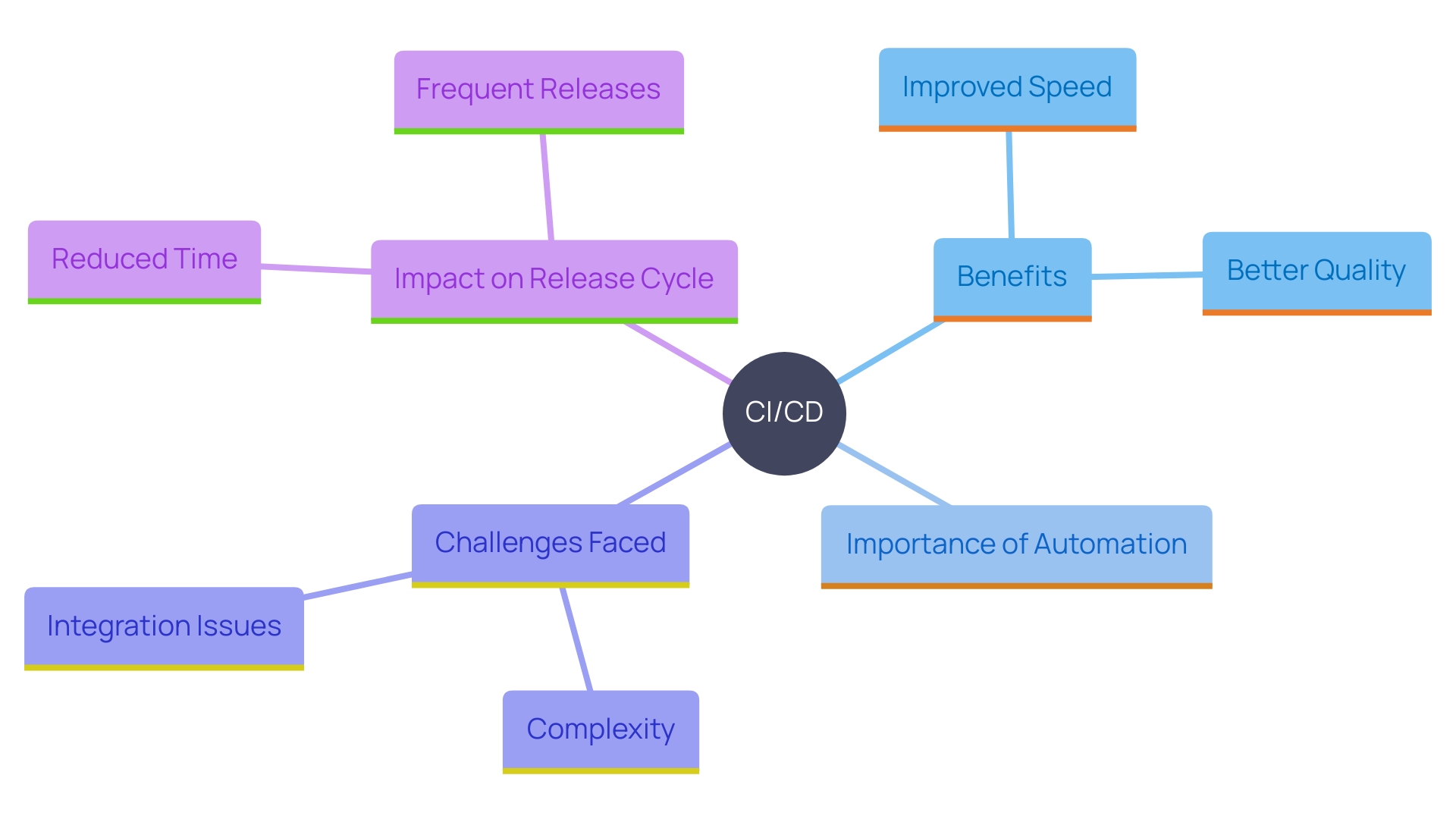
Infrastructure as Code (IaC)
Infrastructure as Code (IAC) transforms the management of setup environments by enabling infrastructure definitions through code. This method not only bolsters repeatability but also introduces robust version control for infrastructure configurations. By utilizing IAC tools, organizations can swiftly scale resources and maintain a transparent audit trail for all infrastructure modifications. Industry data reveals that 44% of models fail to reach production, often due to inefficient setups and management. IAC addresses these inefficiencies, ensuring that scaling and provisioning are streamlined, reducing the burden on data scientists and IT teams. This approach aligns with the broader shift towards DevOps, which emphasizes greater collaboration and automation, ultimately enhancing productivity and reducing costs.
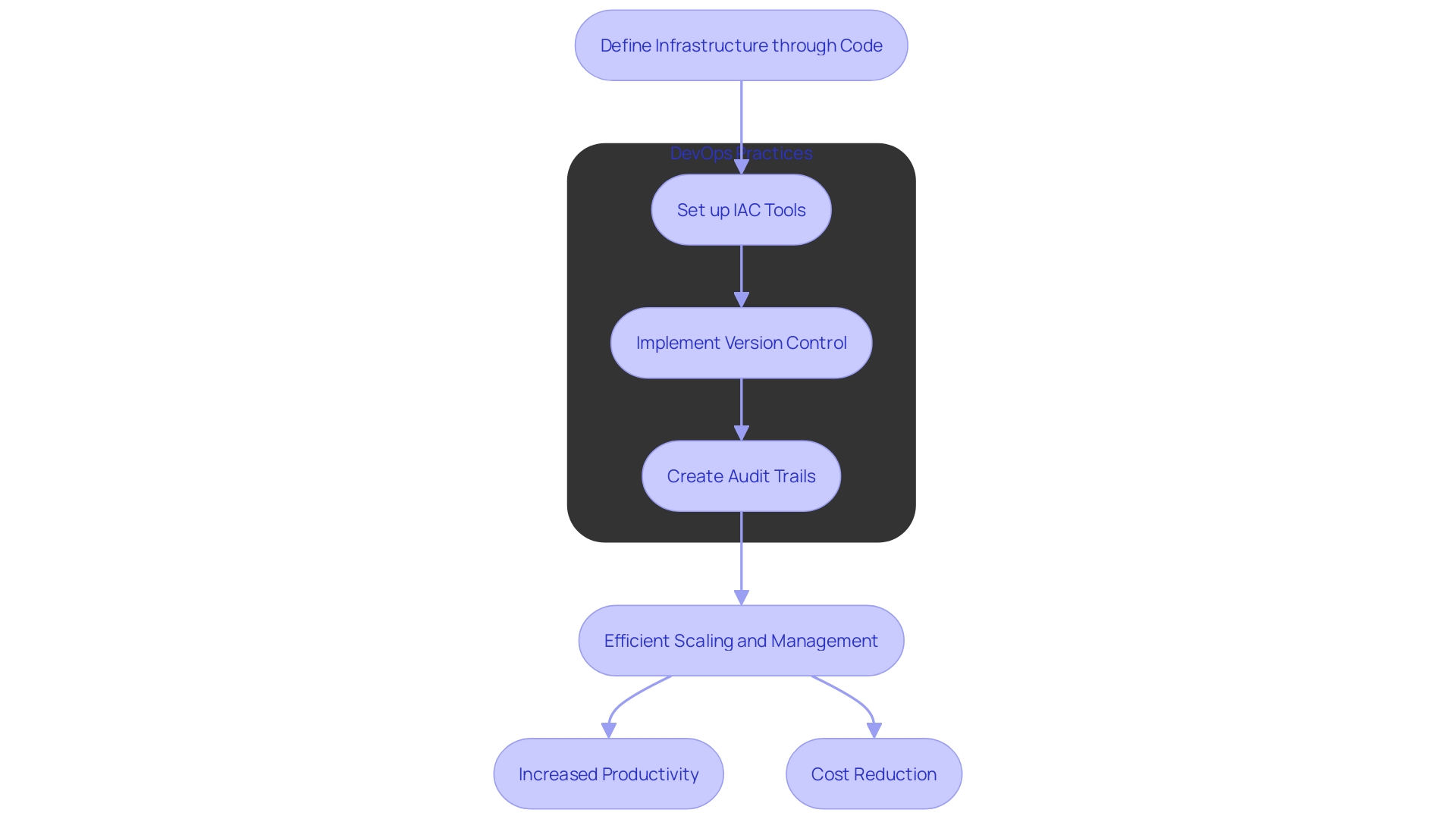
Automated Testing and Monitoring
Automated testing plays a pivotal role in ensuring the quality of deployments within CI/CD pipelines. By incorporating automated tests, organizations can validate that code changes adhere to predefined quality standards before they reach production. 'This process is crucial for maintaining the integrity and performance of applications, especially in the dynamic landscape of contemporary development.'.
Continuous monitoring post-deployment enhances this approach by allowing teams to track application performance and user experience in real-time. Given that 83% of users have encountered problems with applications and digital services, proactive monitoring becomes indispensable. It ensures that issues such as sluggish response times and transaction errors are identified and resolved swiftly, thereby safeguarding user satisfaction and system reliability.
Incorporating automated testing and continuous monitoring not only enhances the Developer Experience (DevEx) by eliminating obstacles and improving efficiency but also supports the adoption of service-oriented architectures. These architectures, often leveraging microservices, benefit significantly from rigorous testing and monitoring to ensure that individual components function seamlessly together. This holistic approach mitigates the risk of discovering issues post-deployment, which can be costly and detrimental to user trust.
Ultimately, integrating these practices into the CI/CD pipeline fosters a robust environment where software can be developed, tested, and deployed with confidence, aligning with the evolving needs of modern software development.
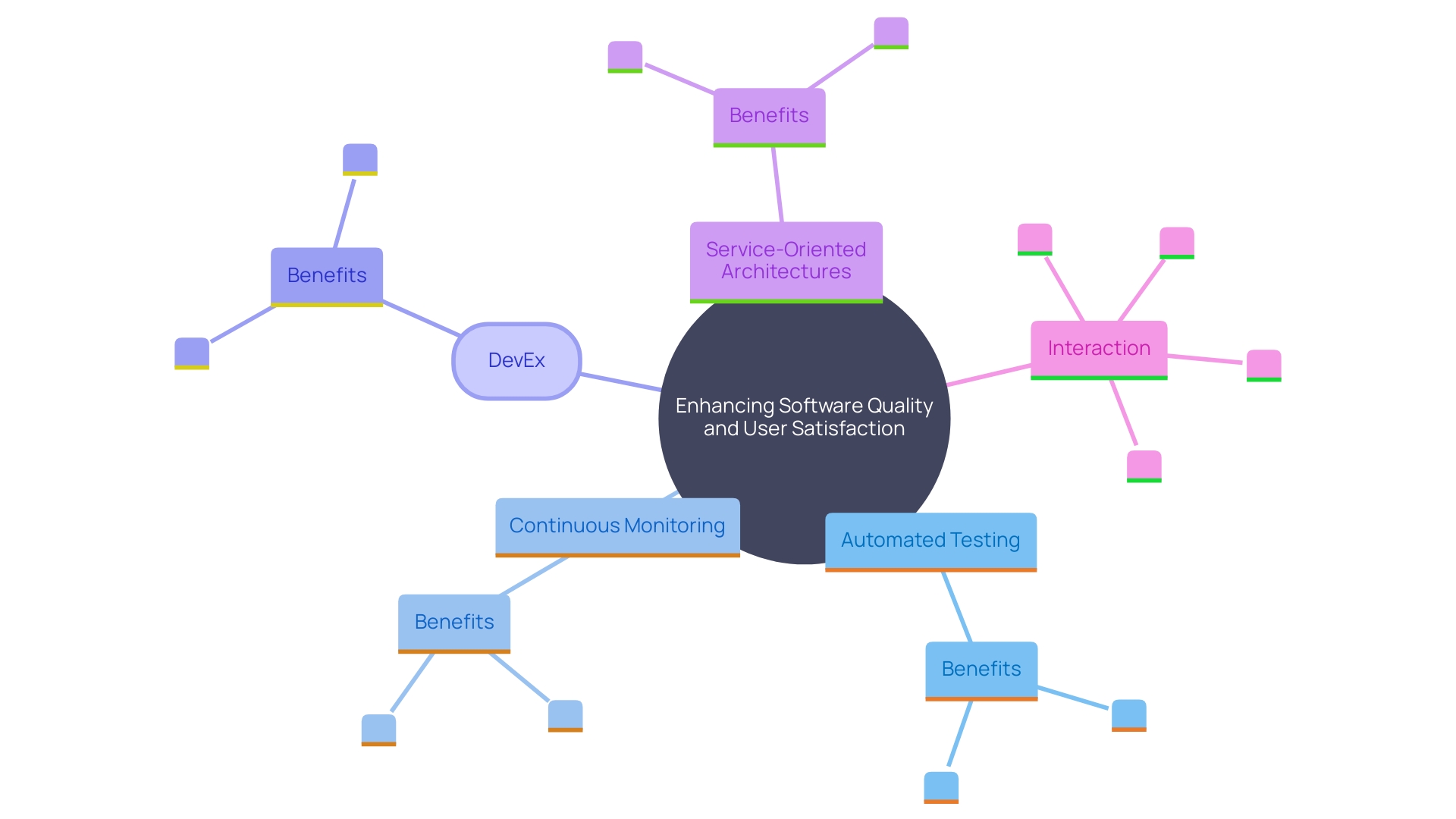
Configuration Management and Version Control
Configuration management is a critical discipline that ensures the systematic management and maintenance of all aspects of the deployment environment. By leveraging version control for configurations, groups can seamlessly revert to previous states in case of issues, thereby enhancing operational resilience. This practice also fosters collaboration and transparency among group members, significantly mitigating the risk of configuration drift. According to the Institute of Electrical and Electronics Engineers (IEEE), maintaining the consistency of a product’s functional and physical attributes throughout its life cycle is essential for project success. Efficient configuration management not only aligns engineering groups but also guarantees the integrity of the product.
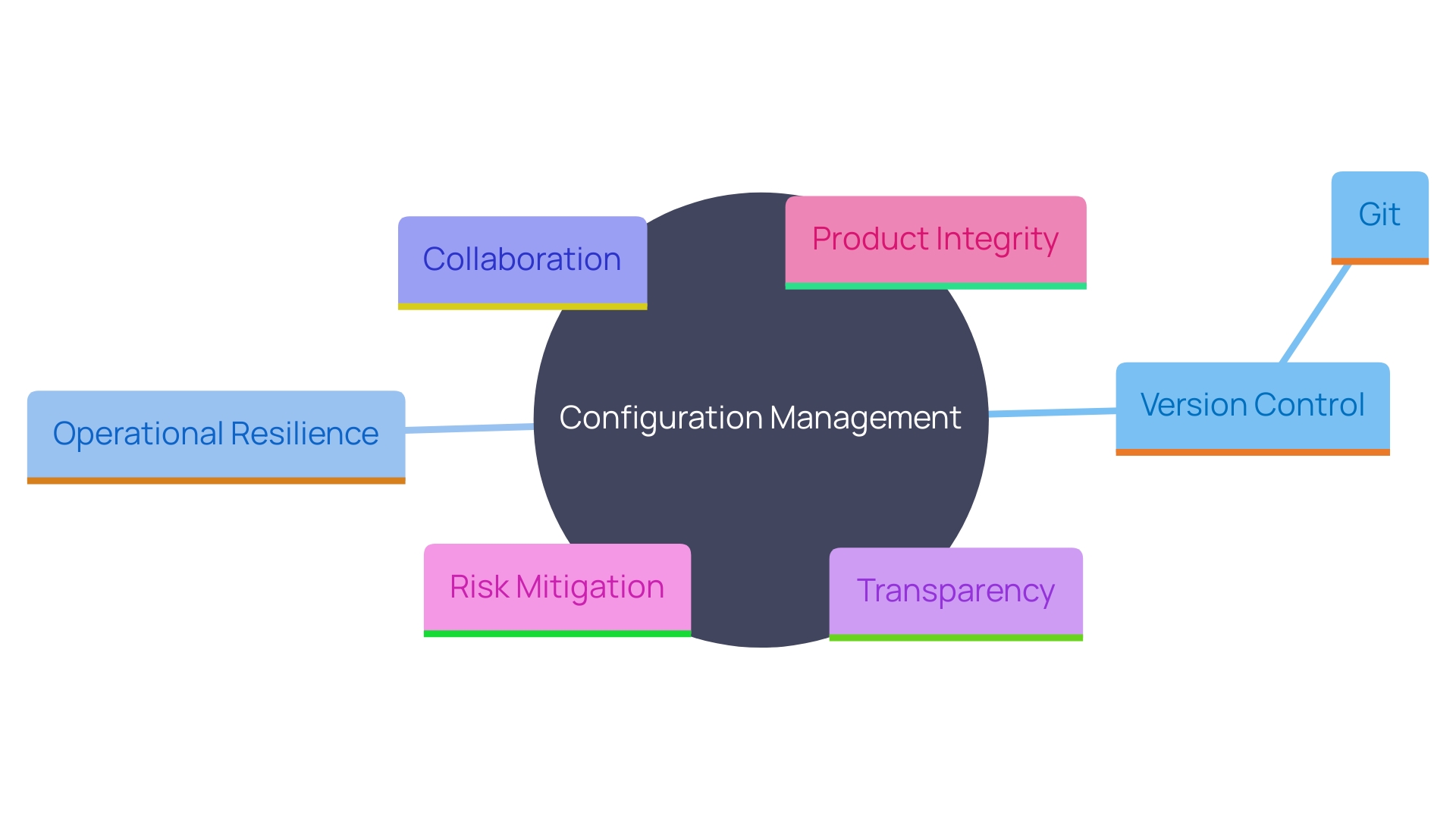
Continuous Delivery and Deployment
Continuous Delivery (CD) builds on the principles of Continuous Integration (CI) by automating the preparation of code changes for production release. This capability allows organizations to deploy updates frequently and reliably, mitigating the risks associated with large, infrequent releases. By embracing CD, teams can foster a culture of innovation, enabling rapid experimentation and iteration. The impact of this approach is evident in various sectors. For instance, our work with over 31 agencies and more than a hundred programs has demonstrated significant improvements in efficiency and effectiveness, from helping working families and veterans to supporting small businesses and retirees. This methodology encourages agencies to rethink what is possible with technology, simplifying operations and reducing IT costs while enhancing service accessibility and public trust. The transformative power of CD is akin to the evolving landscape of application performance management, where telemetry and observability offer unprecedented visibility and proactive issue resolution, further emphasizing the importance of a streamlined, automated software delivery pipeline.
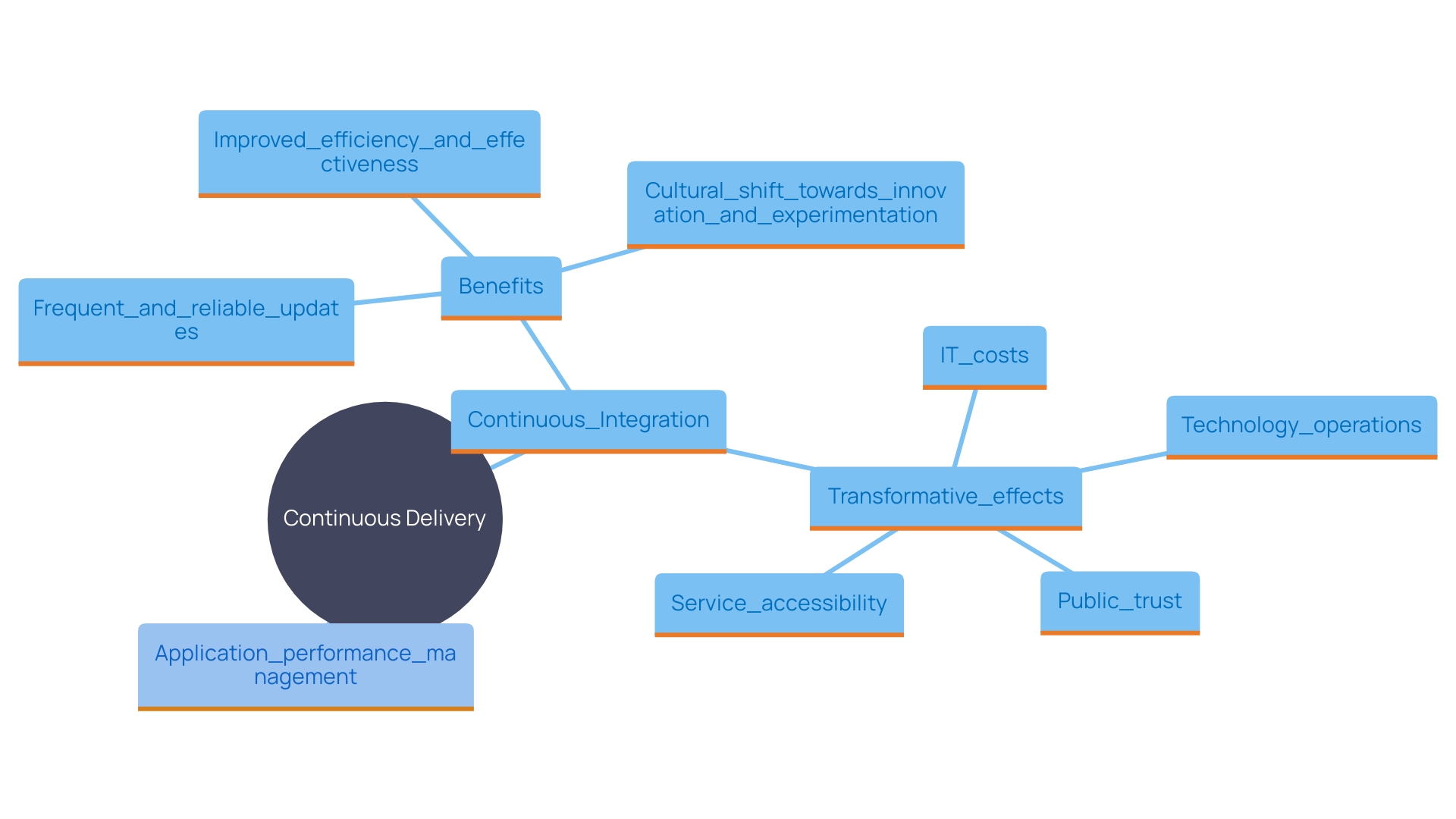
Rollback Strategies and Disaster Recovery
A strong rollback plan is crucial to reducing interruptions during release failures. By implementing automated rollback procedures, organizations can quickly revert to a stable state, significantly reducing downtime and user impact. For instance, the case of UniSuper's Google Cloud outage demonstrates the critical importance of having a reliable rollback mechanism, as their lack of immediate recovery options led to extended service disruptions. Moreover, a comprehensive disaster recovery plan is paramount for swiftly restoring critical systems in the event of a catastrophic failure. As noted, an average IT outage in a mid-sized company can cost approximately 25,000 Euros per hour, with annual damages reaching over 380,000 Euros. Therefore, automated rollback and disaster recovery plans are not just technical necessities but crucial for maintaining business continuity and minimizing financial losses.

Scalability and Flexibility in Deployment
Scalability is a crucial element in implementation strategies. By designing processes that can adapt to varying workloads, organizations ensure consistent performance, even during peak times. For instance, Chess.com, the leading platform for chess enthusiasts with over 150 million users, has mastered scalability. Their infrastructure, a combination of public cloud and on-premises solutions, supports over ten million chess games daily, ensuring a seamless experience for users worldwide. 'Adaptability in implementation allows teams to swiftly respond to evolving business requirements and technological advancements, maintaining a competitive edge in a rapidly changing environment.'. This adaptability is crucial as the world’s digital data generation is expected to increase 1.5 times by 2024, driven by AI and cloud migrations. Thus, effective implementation strategies are vital for managing the growing data demands and ensuring robust performance.
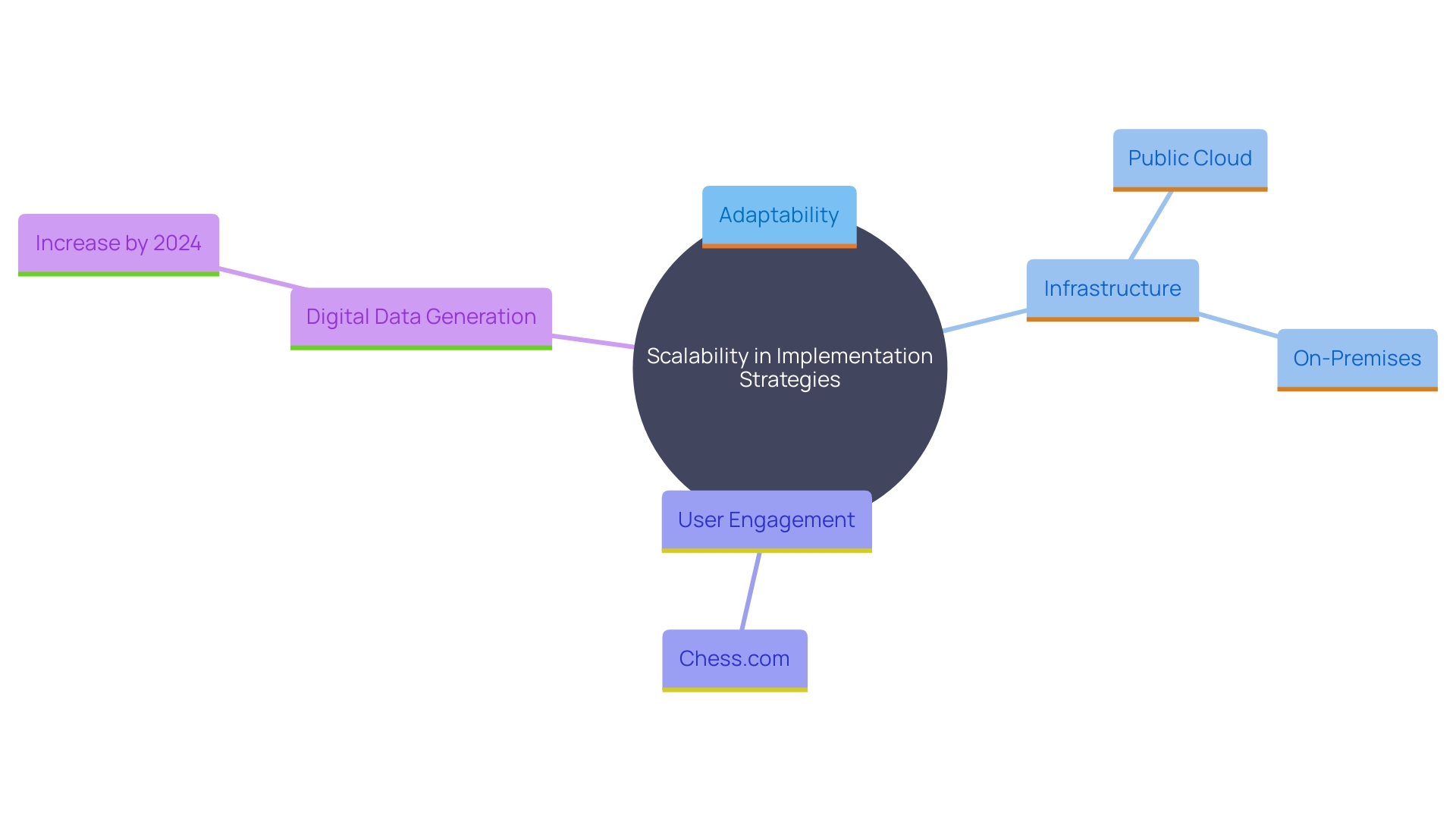
Effective Planning and Stakeholder Engagement
Involving stakeholders throughout the implementation process ensures that technology initiatives are aligned with organizational objectives. This alignment begins with a comprehensive technology audit, assessing the current state and identifying areas for improvement. Regular communication and collaboration with all parties are essential, fostering a shared vision and managing expectations effectively. This approach also emphasizes the importance of understanding the applied potential of data and analytics, recognizing that data powers both internal and external processes. By involving executives who understand the strategic application of emerging technologies, organizations can allocate resources efficiently and achieve successful implementation results. As noted by experts like Dan Sutch, understanding digital trends and conducting thorough assessments are foundational to crafting a strategy that meets both current and future needs.
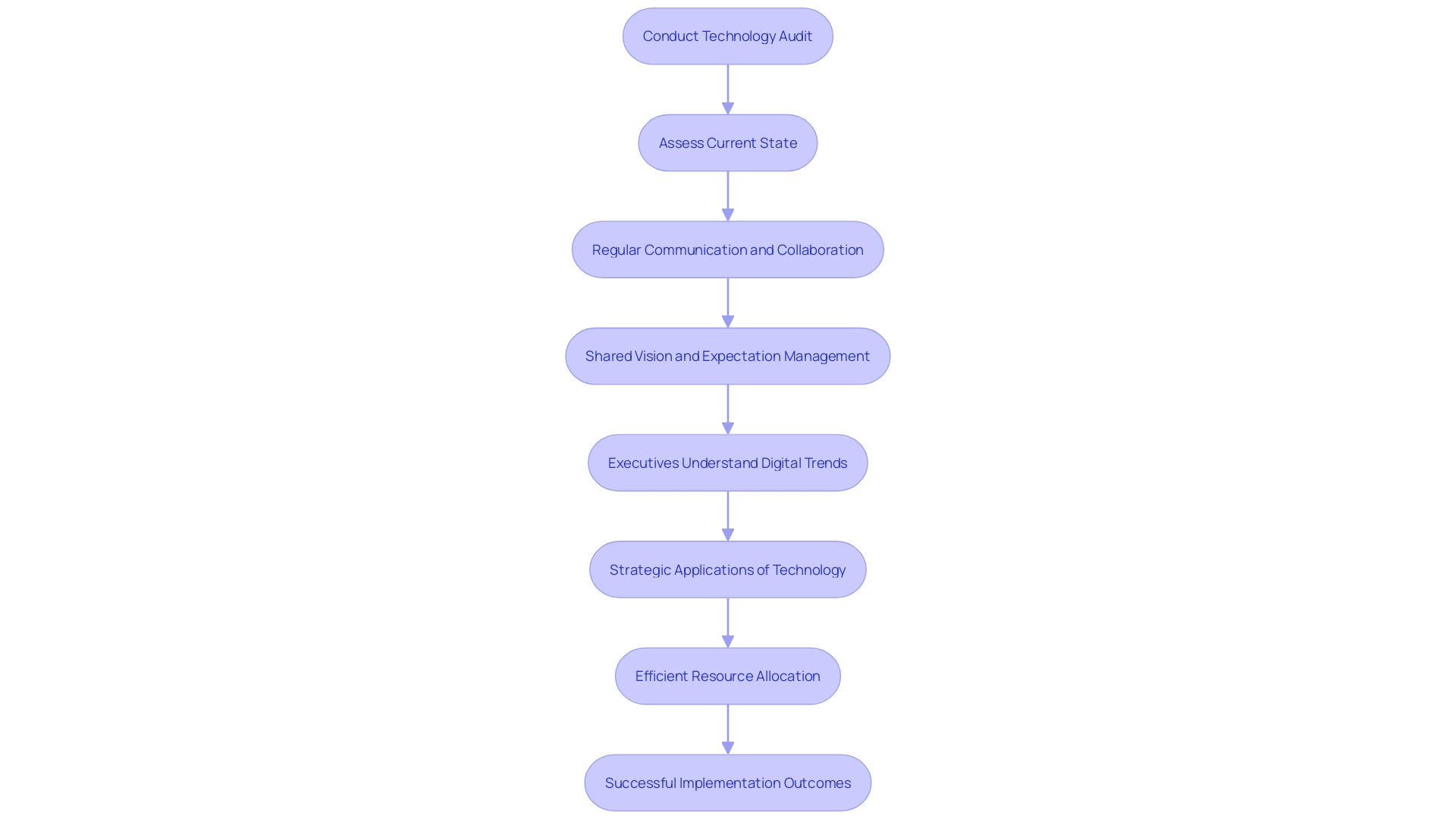
Continuous Improvement and Feedback Loops
Establishing a system for continuous enhancement is crucial for fine-tuning implementation practices. It involves actively gathering feedback from team members and stakeholders to identify areas for improvement and implement changes that enhance efficiency. Frequent retrospectives and performance evaluations assist in nurturing a culture of learning and encourage continual progress in implementation strategies. For instance, Siemens Digital Industries has successfully bridged the gap between physical and digital realms by leveraging fast, accurate data to power various sectors, from automotive to healthcare. Their commitment to continuous improvement ensures their software and solutions remain cutting-edge. Likewise, MYOB’s digital transformation journey emphasizes the significance of placing customers at the center of their enterprise, thereby facilitating more efficient implementation and configuration practices. By empowering and trusting specialists, and by delegating authority and responsibility, organizations can significantly enhance their deployment strategies, as evidenced by the lessons learned from the Hoover Dam project. This monumental engineering feat, completed ahead of schedule despite numerous challenges, underscores the value of a culture of shared responsibility and continuous improvement in achieving remarkable outcomes.
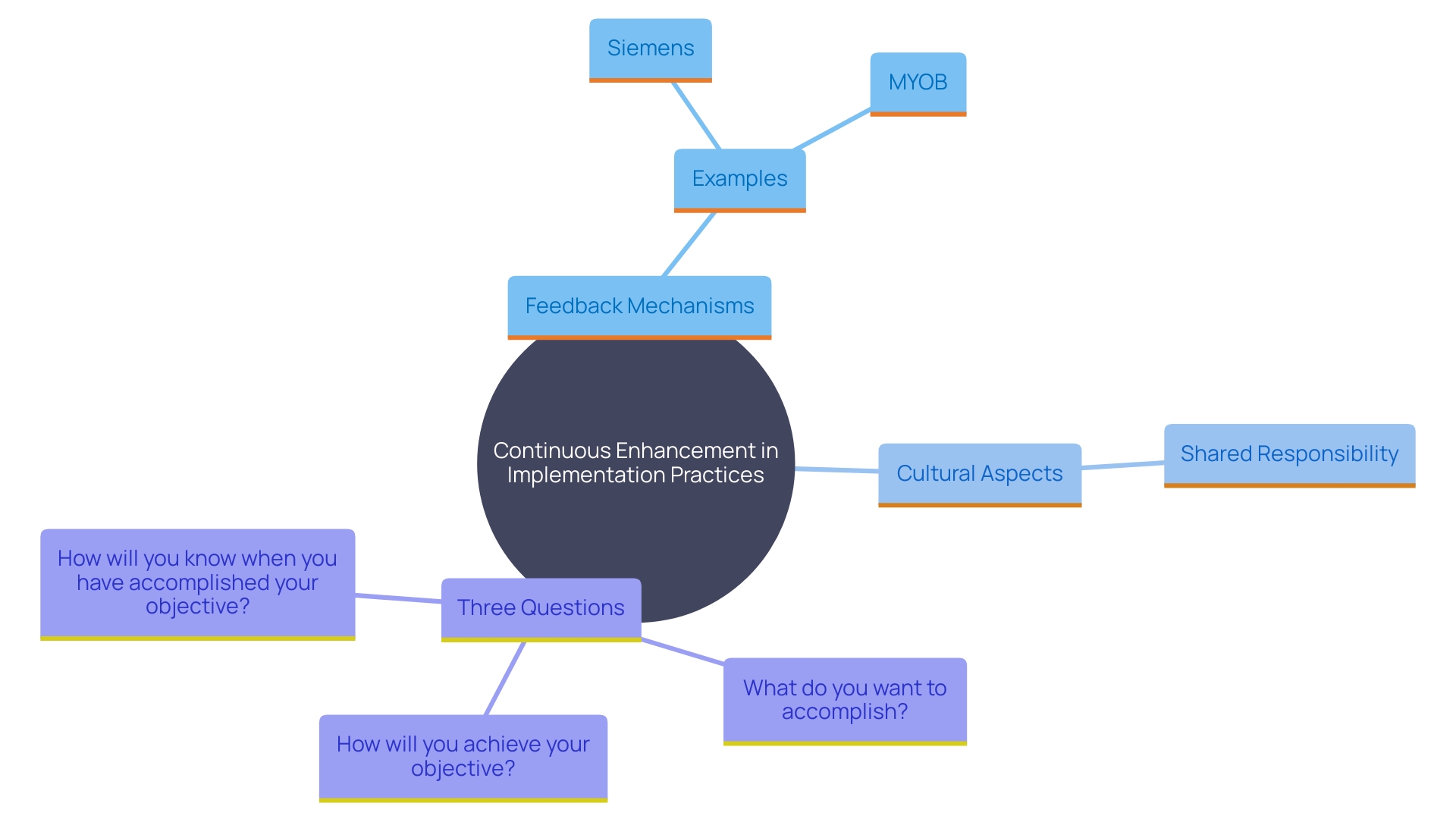
Conclusion
Efficient deployment practices are indispensable for organizations aiming to enhance agility, reduce time-to-market, and improve application stability. By embracing automation and continuous deployment, businesses can streamline their processes, ensuring that every code change is tested and deployed promptly. This capability not only mitigates risks associated with human error but also elevates overall product quality, fostering greater customer satisfaction.
Moreover, the integration of principles such as Infrastructure as Code (IaC), automated testing, and continuous monitoring plays a pivotal role in optimizing deployment strategies. These methodologies enhance operational efficiency and empower teams to focus on innovation rather than routine tasks. The importance of effective configuration management and robust rollback strategies further underscores the necessity of maintaining a resilient deployment environment that can swiftly adapt to challenges.
In a rapidly evolving digital landscape, the commitment to continuous improvement and stakeholder engagement is vital. Engaging stakeholders throughout the deployment process ensures alignment with organizational objectives, fostering a culture of collaboration and shared vision. By prioritizing feedback loops and regular performance reviews, organizations can refine their deployment practices and remain competitive.
Ultimately, the transformative impact of efficient deployment practices extends beyond mere technical enhancements. It cultivates trust among stakeholders, strengthens team morale, and positions organizations for long-term success in an increasingly complex marketplace. Embracing these principles is essential for any organization looking to thrive in the current technological landscape.




